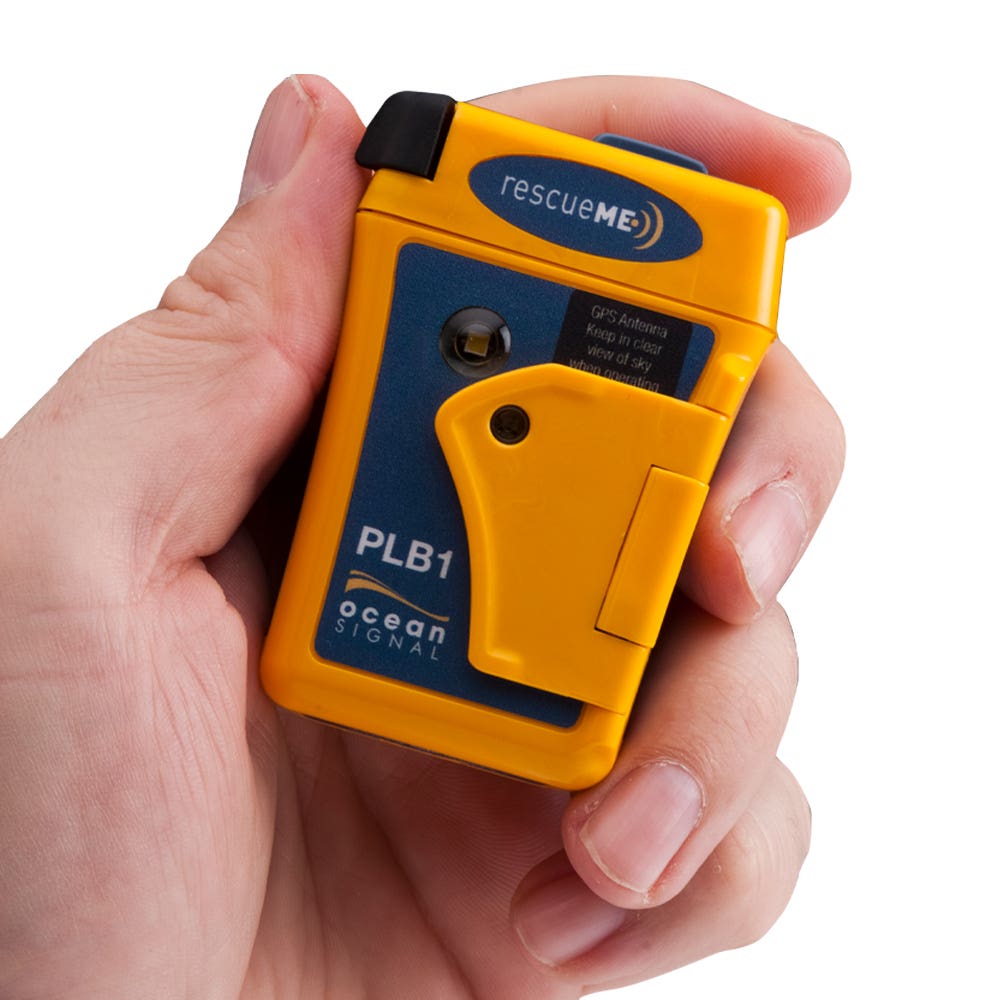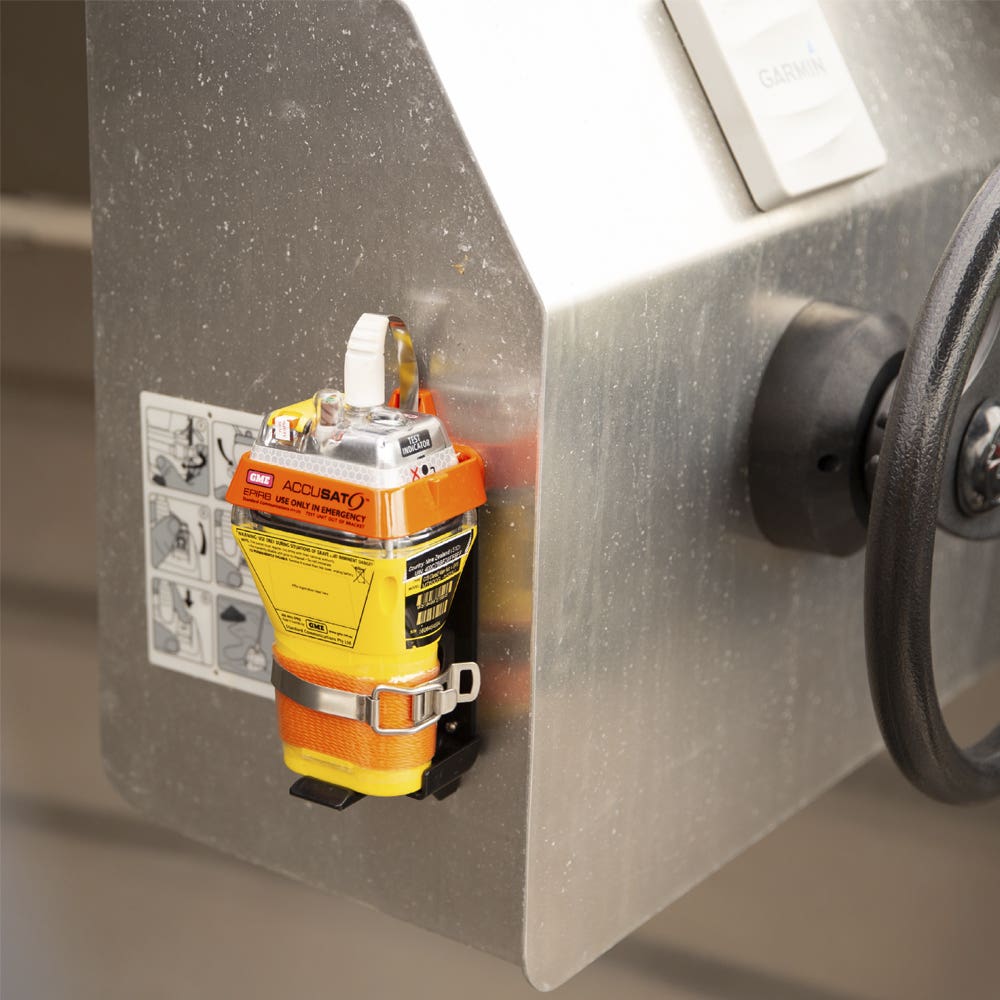EPIRB or PLB? Which One to Choose?
When standing face to face with nature, things can turn sideways in the blink of an eye. In an emergency you may not have the time or ability to use your cell phone to call for help, so an emergency beacon could be the difference between life and death for you or someone you know.
What is an Emergency Beacon?
An emergency beacon is a device that gives off a satellite signal to rescuers in potential life-threatening situations in the air, sea or on land. Rescue Coordination Centre NZ (RCCNZ) responds to all beacon activations in New Zealand and they promptly send search and rescue teams to assist. There are 3 types of 406MHz distress beacons designed for different environments.
PLB – Personal Locator Beacon
EPIRB – Emergency Position Indicating Radio Beacon
ELT – Emergency Locator Transmitter.
The latter is designed specifically for aircraft and activates automatically following a crash. Burnsco have available the other 2 options: EPIRBs and PLBs. Whilst they function similar, they are designed for different situations.
What is the difference between an EPIRB and PLB?
EPIRB
As mentioned above, EPIRB stands for ‘Emergency Position Indicating Radio Beacon’. These are designed to be used in sea vessels and can either be mounted to a fixed, easy to access location or stored somewhere easily accessible such as a safety grab bag.
There are 2 main types of EPIRB, GPS and non-GPS. The alert time on both is more or less the same, within minutes after activation. However, the main differences relate to the time taken to provide a location and the accuracy of that location.
Non-GPS EPIRBs need to wait for the satellite to pass over the location twice before confirming an accurate position. This can take anywhere from 90 minutes to 5 hours and deliver accuracy to 5km.
In contrast, GPS EPIRBs deliver an accelerated response and improved accuracy, taking a maximum of 20 minutes to provide a location and are accurate to within 100m.
It is with this reason and the minimal price difference between the two, that Burnsco only sell the GPS EPIRB version.
Like inflatable lifejackets, some EPIRBs can be automatically activated when submerged in water and others require manual activation. Both are designed to float in water, making them easier to locate in an emergency.
PLB
Personal Locator Beacons were originally designed to be used on land, however due to the increase in technology these are an excellent option for taking to sea. Being smaller in size, their compact design allows you to carry this on your person in a pocket or clipped to your PFD, rather than mounting like a traditional EPRIB. Unlike EPIRBs, PLBs can only be activated manually, so it is important to learn how to activate your particular model.
Different PLBs have unique features upon activation, such as strobe lighting, buoyancy, IP water ratings and infrared lighting to help rescuers using night vision goggles. You can also purchase a pouch to add an extra layer of protection to your PLB. Particularly handy if you are hunting, hiking or trekking through dense bush.
Like EPIRBs, most PLBs Burnsco stock have a GPS feature that improves accuracy.
To put this into perspective: Imagine you’re on a multi-day tramp deep in the Waitakere Ranges and you manage to slip off course and break a leg. You pull out your PLB to alert emergency services and then you wait for them to arrive. Without GPS, the search party now have to cover a 5km radius in deep bush in the hopes of finding you, whereas if you had a GPS-enabled PLB, their search would be more confined, and you would be rescued much quicker.
When to carry your beacon?
Carrying a beacon will give you peace of mind that if you do get into a sticky situation, you will be able to contact rescue services.
For boaties, you should always take 2 forms of communication with you, ideally this should be a beacon along with another form of waterproof communication such as a VHF radio or cell phone in a waterproof case. It is better to be safe than sorry, so always consider taking your beacon with you, even if you don’t think you will get into trouble.
Registering your beacon
New Zealand Radio Regulations require devices such as 406 MHz beacons to be registered. This means if you own a NZ coded beacon it must be registered with the Rescue Coordination Centre New Zealand. This is free and easy to do.
By doing so, if you ever activate the beacon, rescuers know who you are and can get more information to help save you and your crew.
To find out more information and to register your beacon head to https://www.beacons.org.nz/create-your-account/
NZ Coded Beacons - Beacons can be used worldwide, but they can only be registered in the country it is coded to. Therefore, it is important to get a ‘New Zealand coded beacon’ and register it so RCCNZ has your information. All Burnsco’s beacons are NZ coded but that is not the case for every retailer or online store. Always check the beacon you are buying is NZ coded, if the price seems too good to be true, it is likely coded to another county.




Servicing and Battery Replacement
In addition to following the manufacturer's schedule of inspections, servicing and beacon self-tests, it is important to regularly inspect your beacon yourself to check for physical damage like cracks or corrosion. Beacon batteries last between 5 and 10 years depending on the make and model. The expiry date can be found on the beacon. Servicing and battery replacement should be done by the manufacturer’s approved service centre. Using a non-certified service centre will make the beacon non-compliant for carriage requirements under NZ law. Find out who can service/replace the battery for your beacon here https://beacons.org.nz/using-a-beacon/beacon-care/
Replacing your beacon
Because a beacon is a hi-tech safety device, you can’t just throw it in the rubbish when disposing of an old one. You must take your beacon to an approved disposal point and contact RCCNZ to advise them of the disposal. Otherwise, you run the risk of a huge financial penalty for sending a rescue team to your local landfill.
Accidents can happen
You’re showing someone how to use the emergency beacon before your trip and accidentally set it off – uh oh. Don’t stress, accidental activation is okay if you immediately contact The Rescue Coordination Centre New Zealand on 0508 472 269. If you do this quickly after activation, you won’t be fined.
Do you have any questions?
Please, contact our friendly team on 0800 102041
or email: website@burnsco.co.nz
We provide general information on products, not personal advice.
Always seek the help of a relevant tradesperson if you have a technical query.







